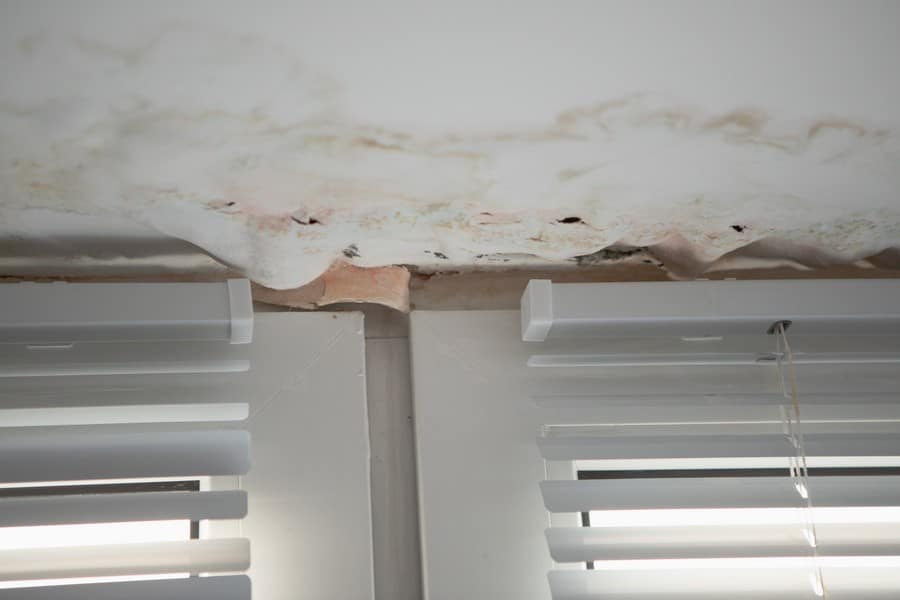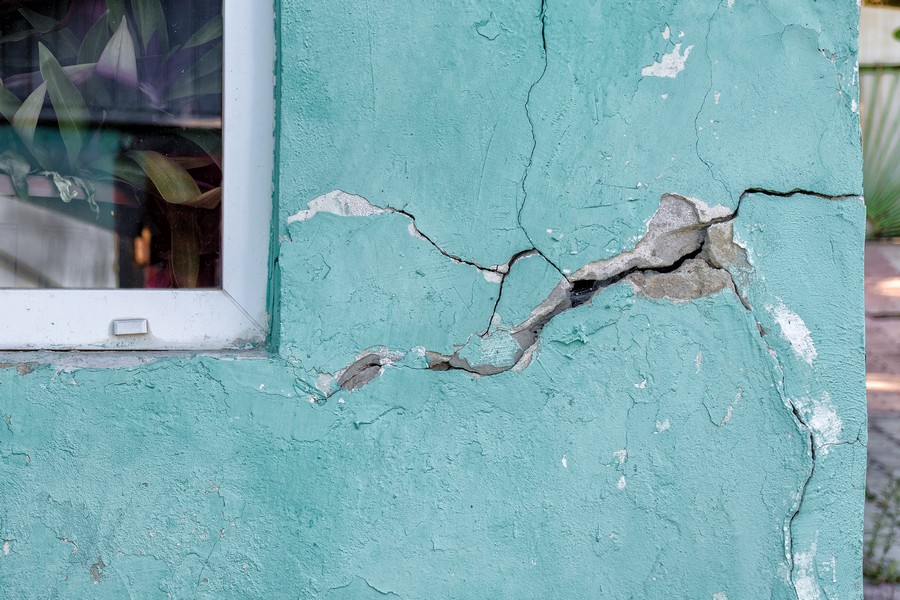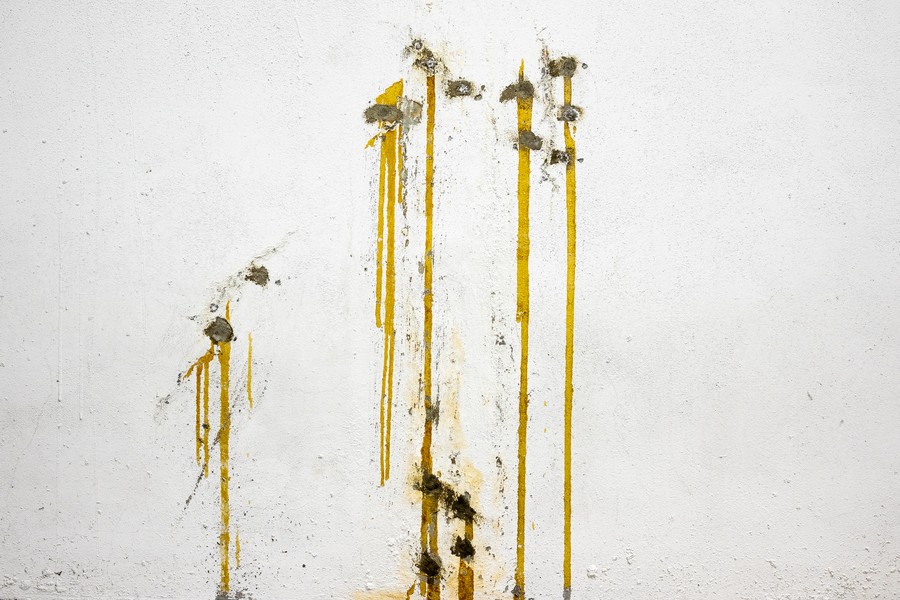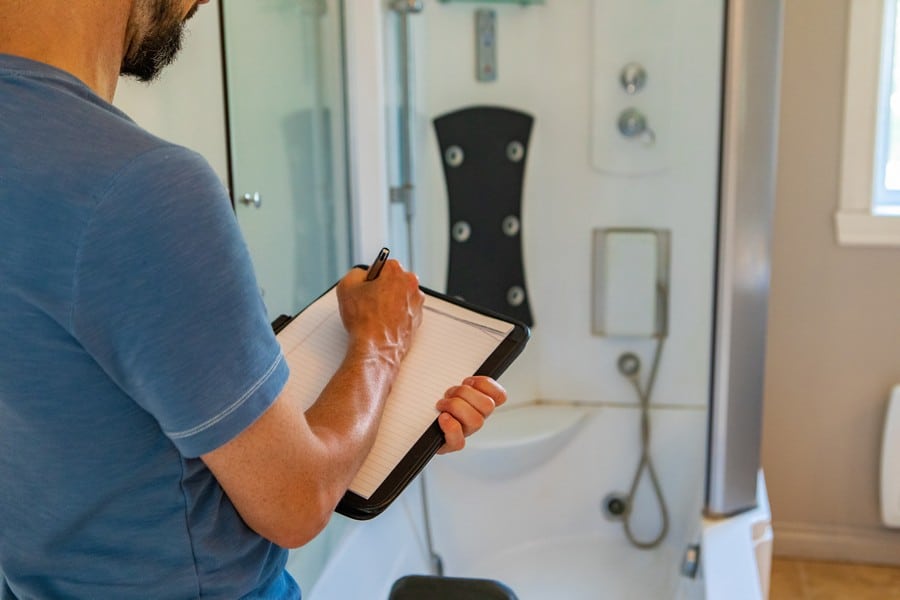Contact Brighton Damp Treatments Now to Speak With an Expert.

Penetrating damp (also known as water ingress or lateral damp) is a common problem in older buildings, but can occur in any age of residence at any level. It occurs when water infiltrates the home through an external wall due to structural issues or because brick/stone walls have degraded and become porous. Mould growth is often caused by penetrating dampness, with high humidity being particularly conducive for black mould formation.
The most common distinction between rising and penetrating damp is their height. Rising damp occurs only up to 1 metre above the ground, while penetrating damp can occur anywhere.
Water infiltrating through walls from the exterior can cause penetrating damp. It is not exclusive to any floor level, yet it’s more likely to occur higher up in a building. Horizontally-travelling damp isn’t the same as rising damp, which moves vertically. The most common sources of penetrating damp are:
Investigate the root cause of any building faults such as faulty guttering, downpipes or damaged roofs and substandard windows before applying Stormdry to beef up your defences.

It can be tricky to identify penetrating damp if you lack knowledge of its symptoms, as these may be mistaken for those of other forms of dampness. So what are the signs?
You should be able to identify signs of penetrating damp, no matter how small or large they are: discoloured patches on walls; mould and mildew growth; bubbling paintwork and wallpaper; peeling plaster.
Continuous rainfall can lead to water entering your property, resulting in damp patches on interior walls. This can cause condensation to form in colder parts of the property. If the problem is severe enough, droplets may appear. Unlike rising damp, there will be no salts from the ground.
Suffering from penetrating damp? Don’t delay! The sooner you act, the less damage it will do. Get in touch with our damp proofing team now – call 01273 920588 or fill out an online form to arrange a survey.
Solid wall properties are more likely to be affected by penetrating dampness than those built with cavity walls.
Hollow walls are effective at protecting against moisture intrusion because they provide a cavity between the external and internal walls, creating an air gap that stops water from getting into the building’s interior.
Property owners should be cognizant that cavity walls do not automatically prevent penetrating damp. Insulation in the walls can impede airflow, allowing water to penetrate into the inner wall despite an air gap existing.
If the outside wall of the cavity has been damaged, moisture can easily enter through any cracks and penetrate its interior. This could lead to a deterioration of insulation in the cavity, allowing for dampness to spread from it onto the inner walls of the building.
Contact Brighton Damp Treatments Now to Speak With an Expert.
If you spot signs of damp, it is a good suggestion to have a professional in moisture penetration take a look at your house to make sure the issue is accurately identified.
Our expert will survey the entire property for signs of damp and timber-related issues, then provide a comprehensive report upon completion.
Our inspection uncovered the cause of the penetrating damp issue. To stop it happening again, specific steps must be taken. Get in touch with us online or phone 01273 920588 to arrange a survey.
Brighton Damp Treatments is the go-to company if you require professional penetrating damp treatment. Our surveyors and specialists will precisely analyse, diagnose, and treat your penetrating damp issue using cutting-edge diagnostic methods and procedures.
With a decade of expertise in safeguarding properties from rot, woodworm and damp, our team are available to help. To book your survey now, call us on 01273 920588 or click the button below.
There are several reasons why your property might be exposed to penetrating dampness. Leaking or damaged pipes, cracked roofs and blocked gutters can all contribute to this problem as they allow moisture to seep into the walls of your property.
As time goes on, the scope of wet damage and paint lifting on your interior walls becomes increasingly visible. During winter, when water in the walls freezes and swells up, it intensifies the peeling of raised paintwork.
Rainfall can infiltrate buildings by way of leaking roofs, clogged gutters, overflows and other water entry points, leading to penetrating damp. This moisture can cause significant damage to walls and beams when it gets into the building’s framework. Large stains on ceilings, floors, walls and interior paintwork are indicators of this type of dampness – particularly after heavy downpours.
Due to their inaccessibility, parapets, roofs and chimneys are often the most susceptible to damage from heavy rains. Roof junctions pose the greatest challenge as water can get in through broken ridges, lead flashings, hips or fillets. The most common culprit behind penetrating damp is structural issues such as faulty roofs, gutters or wall cracks; these can cause havoc with interior and exterior walls of a building.
Call Brighton Damp Treatments now. Make sure your property is in top condition with our expert services – we guarantee you’ll be satisfied with the results. Our team of professionals will provide a rapid response, working within 24 hours to tackle damp problems quickly and efficiently. Get in touch today for an unbeatable service!

Call Our Brighton Damp Experts team now for a free quote, consultation and advice.
Identifying and resolving the root cause of moisture/water ingress is integral to treating penetrating damp. The majority of cases are usually due to property issues. In residential properties, there are generally four potential sources of water entry that can affect a home:
Defective rainwater disposal items are a major problem. These items can cause significant damage, costing thousands of pounds to repair. To minimise the risks associated with them it is essential that they are replaced immediately when noticed to be defective.
To ensure the brickwork remains unaffected by saturation, it is essential to maintain these areas in excellent condition and repair any faults or issues found.
Hygroscopic salts, which are drawn from the ground by increased humidity, can keep on drawing moisture, particularly when it’s humid. The damp-proof course will prevent any further rising of moisture. If this is a problem to an unsatisfactory degree then PTL plasterers should be contacted for re-plastering to specification and quotes.
Penetrating damp is one of the most hazardous and destructive issues a home can face. Also referred to as rain penetration, it occurs when water from outside enters its structure. Its source can usually be identified and treated with low-cost solutions by our skilled moisture-proofing experts. We are able to assess and resolve penetrating damp problems.
Hundreds of Brighton homes have utilised our damp-proofing specialists. For a survey or treatment quote, please phone us on 01273 920588 to speak with experienced and qualified professionals.
Damp proofing is a technique to stop moisture from getting into buildings. If you only take limited action against damp (e.g. re-pointing or covering the affected area), it will cost more in the future and require redoing later on.
A damp proof course is a water-resistant barrier that traverses the length and breadth of the wall, hindering groundwater from rising via capillary action.
At Brighton Damp Treatments, we provide several damp proofing options with their own benefits. A damp proof course (DPC) is a method of controlling rising moisture due to capillary action.
A damp proof membrane (DPM) provides protection from water and moisture, including rain, by coating the building with a unique material composed of silicone and cement such as shotcrete. It is also used to keep water out in the construction of cavity walls, while pressure grouting fills any gaps in masonry walls.
A silicone-based solution is injected into a series of holes drilled along the base of a wall that has been affected by rising damp, forming a chemical damp-proof course.
Contrary to popular belief, a chemical DPC does not result in an impenetrable physical barrier. However, damp-proofing with a water-repellent silicone compound can be an effective way of filling the pores of a brick wall. This neutralises the charge attraction between the particles of bricks and water molecules, decreasing adhesive forces to match those of cohesion.

An injection applicator is utilised to inject silicone-based damp-proofing cream into 12mm holes drilled in the bed joint. Prior to curing, the DPC cream rapidly diffuses and forms a water-repellent damp proof course which tackles rising damp in brickwork and masonry walls. The injection procedure is paramount when managing increasing moisture levels in homes; it’s also highly effective, offering a straightforward and reliable solution.
Even with a chemical damp proof course system in place, water can still travel up brickwork via the perpendicular joints. There must be an uninterrupted path for it to ascend; thus, only mortar bed jointing can provide a moisture-proof barrier.
Position a DPC 150mm above external ground level, beneath the floor joists or close to solid floors. If this is not feasible, additional measures may be needed to protect low-lying areas and flooring timber.
A vertical upstand should be installed wherever a wall is extended beyond the new DPC, like in cases of an enlarged terrace, to stop moisture transmission horizontally from adjacent walls. Inject chemical into holes in a zigzag pattern along the mortar line, continuing up the wall for at least one metre to form a vertical DPC.
We suggest injecting the cream from both sides for brickwork walls with cavities. For rubble-filled walls, which are essentially cavity walls full of rubble, damp proofing chemicals will likely be ineffective. Therefore, an electro-osmotic system is probably better suited to achieve optimal results.
If you detect moisture in your home, act swiftly to avoid potential serious consequences for occupants.
Moisture problems can cause visual distress as well as serious damage to a building’s structure, potentially jeopardising its structural integrity if not attended to promptly. Research indicates it may also exacerbate respiratory afflictions in those with existing conditions.
If you’re experiencing condensation, leaking gutters or pipes, don’t delay – get in touch with our damp-removal and proofing experts straight away. We’ll come out to fix the problem promptly.
Our pledge to deliver outstanding customer service and our expertise, are the reasons for our ongoing success.
Our team has a decade of combined proficiency providing damp proofing in Brighton. If you have damp problems in the capital and its environs, kindly call our specialist damp squad on 01273 920588 to arrange an inspection or remedy.
Our CSRT and CSSW-trained surveyor will carry out an in-depth inspection, providing a report, quotation and treatment advice as per our instructions.
If you choose to proceed with our damp proofing services, our team of specialists are highly qualified and experienced in dealing with a variety of damp issues, including dry rot and woodworm, wet rot, wood rot, basement waterproofing, internal dampness and rain penetration. We also provide condensation control services for commercial properties as well as private residences.

The cost of tackling a damp issue is contingent upon many aspects, including the size and design of the property, the origin of the dampness, and involved materials.
Don’t hesitate to get in touch with our highly experienced team and book a survey. One of our friendly staff will inspect the property and gain an accurate understanding of the situation, in order to give you the most economical quote and treatment.
We maintain high standards for damp proofing treatments, re-plastering, wood preservation and damp inspections.
We specialise in providing customised, reliable and professional damp-proofing treatment and repair services to homeowners, small businesses, local governments and large commercial properties.
If you’re having damp problems in Brighton and the vicinity, please contact our specialist team on 01273 920588 to arrange an inspection or treatment.
One of our Certified Surveyors in Remedial Treatment and Certified Structural Surveying Workshops-trained surveyors will carry out an exhaustive examination, providing a report, price quote and recommendations for treatment, per our instructions.
Our team of damp proofing specialists boast extensive experience in tackling all forms of dampness, including penetrating damp, dry rot and woodworm, wet rot and wood decay, basement waterproofing, interior moisture issues and condensation control in both commercial and residential properties.
Qualified surveyors assess properties in order to determine their value. They inspect buildings and land, taking measurements and examining documents related to the property. After gathering data, they prepare reports for clients that provide information about the property’s condition, estimated worth, and potential risks. Surveyors ensure accuracy by personally checking all facts before putting them into a report or other document.


Max and his team have been at our property all week and I really can’t thank them enough for the fantastic job they’ve done on plastering both our walls and ceilings. They have literally transformed the appearance of our house! Not only has Ma…
From start to finish Max has been incredable. His knowledge lin damp proofing is second to none and his team where very clean and polite. The plastered finish was like glass so happy we choose Max Plastering for job.
Lovely bunch of lads left a very neat and clean job. Problem was solved.
Perfect Finnish and all left clean and tidy and no mess. Used Max previously and would not hesitate to ask him carry out more work.
Max, Harvey and Stuart arrived promptly as arranged. Done a great job on our outside rear wall. Work completed to a high standard, removal of all old material and cleaned up after themselves. I am so pleased with the standard of their work they ar…
They turned up on time and carried out the works in a very professional manor leaving the front of the house clean and tidy. Very impressed would definitely recommend.
I have to say that on every level Max (with Stuart and Harvey) did an extremely professional job! They explained what they were going to do, they were polite and courteous and respected that they were coming into our home. The plastering is of the…
I called max and he managed to come around the same day to do a survey. The next day I received an extremely detailed survey compared to any other damp proofer which made me feel very at ease that he was going to do the right job. Max and team tur…
Contact Brighton Damp Treatments Now to Speak With an Expert.